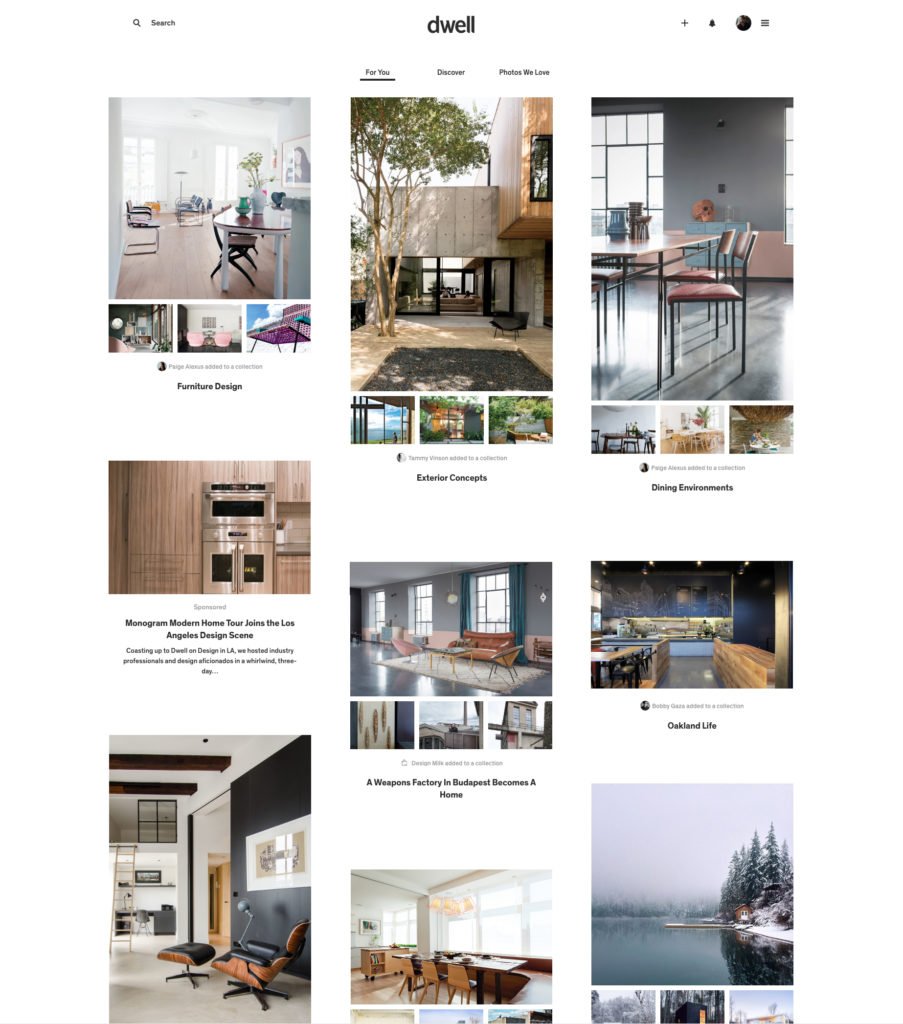

DWELL, THE SHELTER magazine for modern architecture and design, has a new website. But it’s more than a redesign; it’s a brand new platform.
Exploring the new Dwell.com feels more like using Pinterest or Tumblr than perusing a traditional online magazine. Visitors aren’t readers; they’re users. And rather than inundate them with content, the website asks users to shape what they see. Everyone gets a profile page, from which they can follow other users and collect stories related to their interests. Profile pages are also a home for stories, hand-picked by Dwell’s editors and featured designers, that fit your users’ interests.
That editorial influence is one of the things distinguishing Dwell.com from an incumbent like Pinterest. Another is its approach to fostering connections between users. As a visually powered discovery engine, Dwell.com isn’t terribly different from, say, Houzz. But the new website is designed to place an emphasis on community, as well—a goal reflected by Dwell’s description of the platform as an “interest network.” Think of it as a social network, only more tightly curated. “I’m not going to follow my Facebook friends on Dwell,” says Dwell CTO Bobby Gaza, who created the platform. “I follow a very focused group.”
Another way to think of it: If a social network is everyone you’ve ever met gathered in a big convention center, an interest network is more like a trade show. Imagine you love mid-century Danish chairs. At this trade show, you’re surrounded not just by your tribe of Danish chair-lovers, but by the designers who make these chairs. There, you all get to talk and collectively nerd out over these things that brought you together.
Community First
Dwell’s higher-ups started thinking about this approach all the way back in 2005. “Our feeling was, even when it was not the popular opinion, that people don’t just want to shop. If you want to shop you can go to Amazon,” says Michela O’Connor Abrams, Dwell’s president and CEO. “But if you feel part of a brand’s community, and you consider it part of what helps you navigate the things you love, you want to be able to interact with it.” That thinking led O’Connor Abrams to pursue partnerships with online retailers, none of which ultimately panned out. She and her team decided to build an interactive content-meets-commerce platform in-house.
The result is, of course, the new Dwell.com, which is meant to feel personal in ways that set it apart from the rest of your media diet. “Back when the internet was much, much smaller, in the early 2000s, there was this activity around forums, where people could gather around a passionate topic,” says Dave Morin, an early platform manager at Facebook and founder of the social network Path, who invested and advised on the new Dwell.com. “The internet is a much bigger place now. I think there’s opportunity to bring back these old ideas and make them new.”
That philosophy could apply to other content creators. Dwell.com can be where you huddle together with other design fans and create a digital vision board for your upcoming kitchen renovation; but fashion magazines, or music blogs, could create similar communities around their material. Indeed, O’Connor Abrams says other brands have already approached her looking to license Gaza’s platform. In this curated future, there’s more focus on what you like, and less time wasted on what you don’t. “It doesn’t have you swimming through an ocean of stuff.” If done well, it’s a win for brands, and a win for users.
[Source:-Wired]





